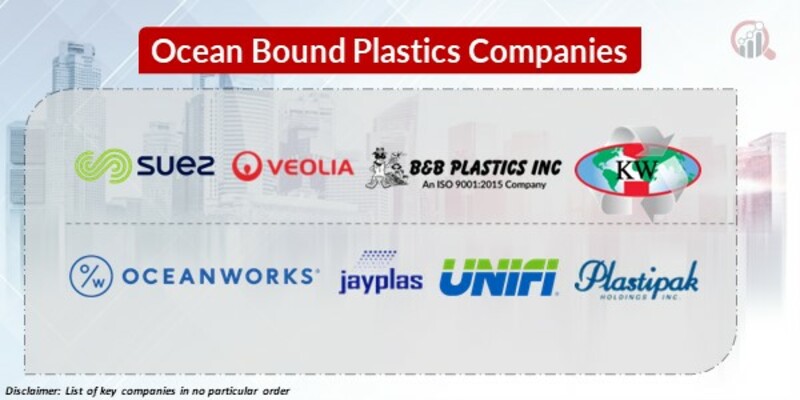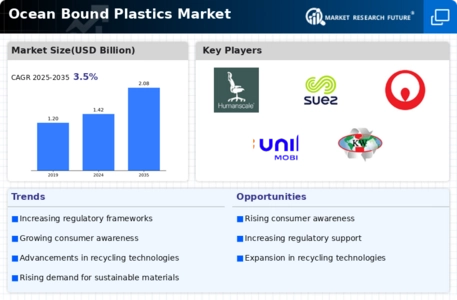Top Industry Leaders in the Ocean Bound Plastics Market

Ocean Bound Plastics Market
The ocean bound plastics market, once a ripple in the environmental consciousness, has become a tidal wave of opportunity and competition. Driven by a perfect storm of rising consumer awareness, regulatory pressure, and technological advancements, creating a treasure trove for savvy players. However, navigating this dynamic landscape requires a deep understanding of the strategies, drivers, and recent developments shaping the competitive terrain.
Key Companies in the Ocean Bound Plastics market includes
-
SUEZ (France)
-
Veolia (France)
-
B&B Plastics Inc. (US)
-
Oceanworks (US)
-
Jayplas (UK)
-
Unifi, Inc. (US)
-
KW Plastics (US)
-
Plastipak Holdings, Inc. (US), among others
Charting the Course: Key Strategies:
-
Vertical Voyage: Giants like Ocean Voyages Institute and Renew Oceans chart their own course, controlling the entire value chain from upstream collection and processing to downstream product development. This ensures a consistent supply of raw material and control over quality.
-
Strategic Partnerships: Collaboration is the wind in the sails of smaller players. Circulate Capital joins forces with waste management giants like Veolia to strengthen collection infrastructure, while ReSea Plastic collaborates with fashion brands like Adidas and Patagonia to weave ocean plastic into their products.
-
Tech Tsunami: Innovation is the lifeblood of this market. Aquafil's Econyl yarn, crafted from regenerated fishing nets, and Alchemy's bioplastic alternatives showcase the transformative power of cutting-edge technology.
-
Community Currents: Building awareness and driving demand is crucial. The Ocean Conservancy's #TrashTagChallenge and Lonely Whale Foundation's influencer partnerships exemplify this strategy, turning the tide of public opinion.
Anchoring Market Share:
-
Collection Prowess: Accessing efficient, scalable collection technologies, particularly in developing nations, is paramount. Drones like RanMarine's and riverine barriers like Ocean Cleanup's Interceptor are game-changers in this arena.
-
Processing Powerhouse: Converting collected plastic into usable materials needs robust and economical processing infrastructure. Companies like Plastic Energy's advanced pyrolysis plants are leading the charge, transforming waste into valuable resources.
-
Product Diversification: The ability to develop cost-competitive and high-quality products across sectors like apparel, construction, and even 3D printing fuels market dominance. Companies like Bureo and Bionic are making waves with their innovative sustainable products.
-
Regulatory Winds: Government policies like extended producer responsibility schemes and plastic bans act as tailwinds, incentivizing the use of ocean bound plastics. The EU's single-use plastic ban and California's ambitious plastic reduction strategy are prime examples.
Recent Developments:
September 2023: SABIC collaborated with Polivouga and Nueva Pescanova to launch the world's first frozen food packaging made with certified circular polyethylene from ocean bound plastic.
November 2023: Control Union and Zero Plastic Oceans launched the world's first third-party verified Ocean Bound Plastic Certification, aiming to improve transparency and trust in the supply chain.
December 2023: Circulate Capital partnered with Veolia to strengthen waste management infrastructure in Southeast Asia, boosting the supply of ocean bound plastic.










